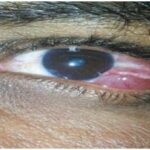Idiopathic Pulmonary Fibrosis (IPF) diagnosis can present a significant challenge for healthcare professionals. This is primarily because the symptoms associated with IPF often mirror those of other respiratory conditions, notably chronic obstructive pulmonary disease (COPD). Consequently, diagnosing IPF requires a systematic approach to rule out similar conditions and confirm IPF accurately. General Practitioners usually initiate the diagnostic journey by referring patients to hospital specialists who can conduct a series of targeted examinations and tests.
Medical History and Physical Examination in IPF Diagnosis
The initial steps in diagnosing IPF involve a thorough review of a patient’s medical history and a detailed physical examination. Doctors will inquire about various aspects of your health and lifestyle to identify potential contributing factors to lung problems. Key questions will focus on:
- Smoking History: Whether you are a current smoker or have smoked in the past, as smoking is a significant risk factor for lung diseases.
- Occupational Exposures: Past or present exposure to harmful substances in the workplace, such as asbestos, silica dust, or certain gases, which can damage the lungs.
- Pre-existing Medical Conditions: Information about any other medical conditions you may have, as some conditions are linked to lung problems.
During the physical examination, doctors will employ several techniques to assess your respiratory health:
- Auscultation (Listening to Breath Sounds): Using a stethoscope to listen to your breathing. A distinctive crackling sound, often described as “Velcro-like,” can be indicative of lung scarring (fibrosis), a hallmark of IPF.
- Finger Clubbing Assessment: Examining your fingers for clubbing, a physical sign where the ends of the fingers become rounded or swollen. While not specific to IPF, finger clubbing is often observed in individuals with chronic lung conditions.
- Exercise Tolerance Test: You may be asked to walk for a short period to observe if you experience breathlessness. Reduced exercise tolerance is a common symptom of IPF and other lung diseases.
Breathing and Blood Tests for IPF Assessment
Pulmonary function tests (PFTs), also known as lung function tests, are crucial in evaluating how effectively your lungs are working. These tests play a vital role in diagnosing IPF and understanding the extent of lung impairment. PFTs involve several measurements, including:
- Spirometry: This measures how quickly and how much air you can inhale and exhale. It helps determine if there is airflow obstruction, common in COPD, or restriction, which can be seen in IPF.
- Lung Volume Measurement: These tests determine the total amount of air your lungs can hold (total lung capacity). In IPF, lung volumes are often reduced due to scarring and stiffness.
- Gas Exchange Analysis: This assesses how efficiently oxygen moves from your lungs into your bloodstream and how effectively carbon dioxide is removed. A blood test, often an arterial blood gas test, might be used to directly measure oxygen and carbon dioxide levels in your blood, providing insights into gas exchange efficiency.
Spirometry is a frequently used PFT. The procedure involves breathing into a mouthpiece connected to a spirometer, a device that measures airflow and lung volumes.
Chest Imaging: X-rays and CT Scans in IPF Diagnosis
Chest X-rays and Computed Tomography (CT) scans are essential imaging techniques used in the diagnostic process for IPF.
A chest X-ray is often the initial imaging test. While it provides a general overview of the lungs and can identify obvious abnormalities like tumors or fluid accumulation, it has limitations in visualizing the detailed lung structures necessary for Ipf Diagnosis.
If IPF is suspected based on initial assessments, a high-resolution CT scan of the chest is typically the next step. A CT scan utilizes X-rays but takes numerous images from different angles. These images are then processed by a computer to create detailed cross-sectional views of your lungs. High-resolution CT scans are particularly valuable in IPF diagnosis as they can reveal patterns of lung scarring, such as honeycombing and ground-glass opacities, which are characteristic features of IPF.
Bronchoscopy in Complex IPF Cases
In situations where the diagnosis remains uncertain after medical history, physical exams, breathing tests, and chest imaging, a bronchoscopy may be recommended.
Bronchoscopy is a procedure where a thin, flexible tube equipped with a camera (bronchoscope) is inserted through your nose or mouth and guided down into your airways. This allows the doctor to visually inspect your airways for any abnormalities and collect samples if needed. During a bronchoscopy for IPF diagnosis, doctors may perform a Bronchoalveolar Lavage (BAL), where fluid is flushed into a small part of the lung and then collected for analysis. This fluid can help rule out other conditions that may mimic IPF. Transbronchial biopsies, where small tissue samples are taken, can also be performed during bronchoscopy, although they are less common in typical IPF diagnosis and more useful for ruling out other conditions.
While you are usually awake during a bronchoscopy, local anesthetic is applied to numb your throat to minimize discomfort and suppress the cough reflex. A sedative may also be administered to help you relax during the procedure.
Lung Biopsy for Definitive IPF Diagnosis
In some instances, particularly when other less invasive tests are inconclusive, a lung biopsy might be necessary to obtain a definitive IPF diagnosis.
A lung biopsy involves surgically removing a small piece of lung tissue for microscopic examination. This tissue analysis is crucial for identifying the characteristic histological patterns of IPF, such as usual interstitial pneumonia (UIP).
Surgical lung biopsies are typically performed using minimally invasive techniques like video-assisted thoracoscopic surgery (VATS). VATS is conducted under general anesthesia, meaning you will be asleep during the procedure. The surgeon makes small incisions in your chest and inserts an endoscope (a thin tube with a camera) to visualize the lung and obtain tissue samples.
The lung tissue sample is then examined by a pathologist under a microscope to look for specific cellular and structural changes indicative of IPF. The results of the lung biopsy, combined with clinical findings and other test results, are essential for confirming the diagnosis of IPF and guiding treatment decisions.
